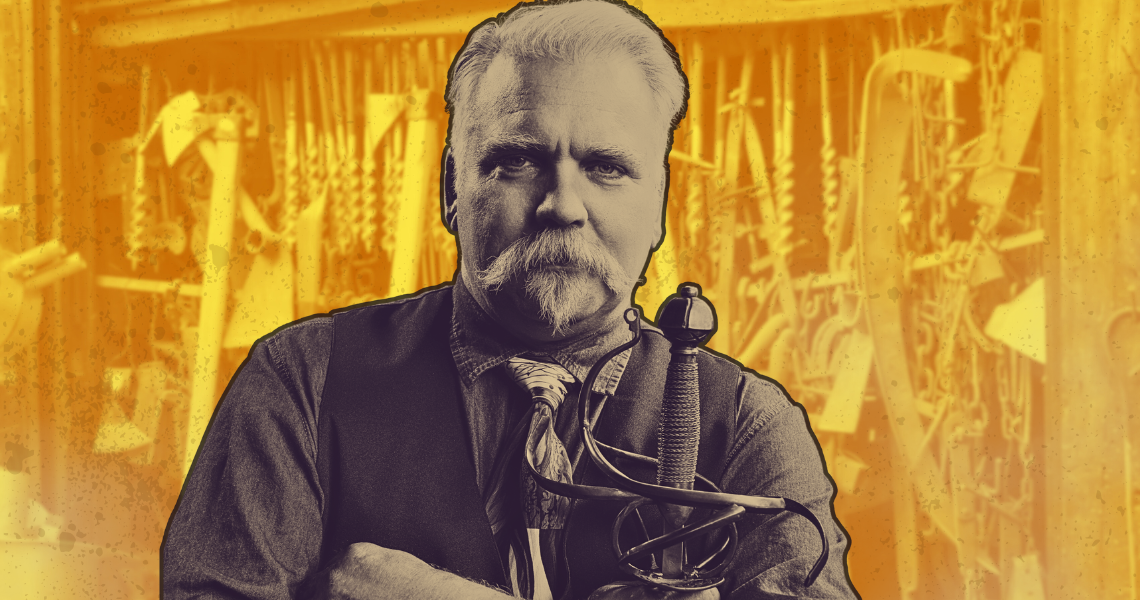Weapons History 101: The Glaive
Forged in Fire season 9 episode 25 brought three bladesmiths together and challenged them to recreate some of the most iconic weapons featured in Marvel's newest videogame Midnight Suns. The first of the featured mystic weapons was none other than Blade's glaive. While typically reserved for the undead monsters of Marvel Comics, the curved double blade became quite the obstacle for episode 25's three competitors.
Who is Blade?
Blade, aka “the Daywalker”, is popular Marvel Comics character. First appearing in 1973’s Tomb of Dracula #10, Eric Brooks is a vampire hunter who himself happens to be a half-vampire. What’s a half-vampire? Well, basically he’s a superhero with all of the strengths of a vampire and none of their weaknesses, hence the whole “Daywalker” thing. Since first appearing in comic book form, the character of Blade has become a mainstay in pop culture. With leading and supporting roles in movies, cartoons and videogames, Blade is a fixture of the darker side of Marvel.
(Image credit: Amen Ra Films)
While Blade is most often associated with his custom longsword, itself stylized to appear East Asian in origin, his glaives have become increasingly recognizable over the last twenty years. These weapons were popularized by New Line Cinema's Blade trilogy, as Wesley Snipes' performance as the titular character catapulted the property into the hearts of mainstream moviegoers. While these fantastic Forged in Fire blades might not be Marvel's deadliest weapons, they do at least have some origins beyond the realm of fiction.
To trace the weapons' roots, however, the true identity of Blade's glaives must first be determined. Traditionally, a glaive is a European polearm with a single affixed blade. Originating with the 1983 film Krull, science fiction and fantasy properties began incorrectly referring to throwing weapons with multiple sides as glaives. Since that terminology was popularized in the 90s and 00s, Marvel Comics has had no need to change the name of Blade's favorite ranged weapon.
“Science fiction and fantasy properties began incorrectly referring to throwing weapons with multiple sides as glaives.”
Blade's East Asian Influence
Historically, Blade's glaive has much more in common with the Japanese shuriken and kunai. While an amateur blacksmith might still need help forging either of those weapons, identifying the glaive's real-world origins could have made a major difference for the competitors of Forged in Fire. Blade's glaive combines the multiple blades of the lightweight shuriken with the stabbing function and wieldability of the kunai tool.
Hira-shuriken, the style of shuriken most recognized by Western media, are small thrown weapons crafted from thin sheets of metal. These would often be made from repurposed items like old coins and scrap. Due to the simple nature of these weapons, they could only be used to target the most vulnerable parts of the body. The eyes and face were particularly optimal points of impact. Blade's glaives share a visual aesthetic and general shape with these tools of Japan's samurai.
Real-Life Fabrication
The size of the glaives and the thrusting technique tested by Forged in Fire's Season 9 episode 25 judges connect it even more closely to the kunai. The kunai was a stabbing tool typically between 7 and 12 inches in length. That's much closer to the impressive length of Blade's weapon, which was described on Forged in Fire as being between 13.5 and 15.5 inches. Although any one-handed blade could be considered an inspiration for this fictional projectile, the only thread connecting all of Blade's most popular weapons is their East Asian inspiration.
“Due to the simple nature of these weapons, they could only be used to target the most vulnerable parts of the body.”
Blade's Asian connections are so strong, in fact, that legendary actor Donnie Yen compared the first Blade film to Hong Kong cinema. Since that is also the Marvel entry that made both the character and these weapons recognizable, it's hard to argue that the historical weapons and tools of East Asia didn't play a role in forging the glaives.
For more on the great swords of history and fiction, and the smiths that bring them to life, stay tuned to Brute de Forge.
About The Author
More from Brute de Forge














